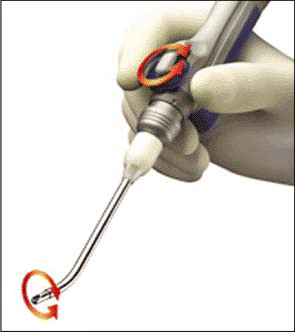Removal of the lesion may be diagnostic as well as palliative, so preservation of tissue for pathological review may be desirable. In cases of malignancy, the debridement of an obstructing lesion can often buy extra time for the patient’s oncologic team to put together a comprehensive plan for oncologic, psychologic, and nutritional management before beginning definitive treatment.3
Explore This Issue
February 2007William Lunn, MD, is Director of Interventional Pulmonology and Assistant Professor of Medicine and Otolaryngology at Baylor College of Medicine. Dr. Lunn was primary author of a study published in The Annals of Thoracic Surgery in September 2005, titled Microdebrider Bronchoscopy: A New Tool for the Interventional Bronchoscopist. Dr. Lunn stated in a telephone interview that he saw a fellow otolaryngologist use the microdebrider for sinus surgery in about 1998, and he and his colleagues thought this would be a great tool to use in the airway. In this study, the authors reported their experience using the microdebrider to treat central airway obstruction.

Dr. Lunn et al. reported that obstructing airway lesions were rapidly removed using the microdebrider in all 23 patients included in the study. Only mild bleeding occurred, even in lesions that appeared to be quite friable and vascular. Bleeding that did occur was controlled by tamponade using the rigid scope or instillation of oxymetazoline hydrochloride. All patients concluded the procedure free of ventilatory support. No further intervention for airway obstruction was required in follow-up ranging up to 24 months following the procedure.
When thermal modalities are used for treatment of obstructing airway lesions, one of the primary dangers is the possibility of an airway fire. Interventions can be quite prolonged because the surgeon must debride, suction, and cauterize sequentially. There is also the potential for causing injury to the airway or surrounding structures, which may require further interventions to correct.
According to Dr. Lunn, the traditional methods of debridement of airway lesions require three instruments in the airway: a telescope, forceps or a cutting device, and suction. Using the microdebrider, the surgeon can hold the debrider in his or her dominant hand, and the other hand is free to hold the scope.
The advantages of microdebrider surgery for airway obstruction cited in The Annals of Thoracic Surgery study include:

Leave a Reply